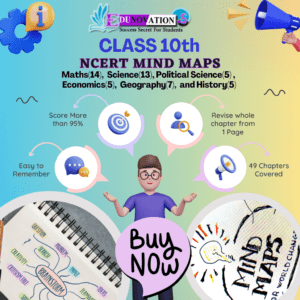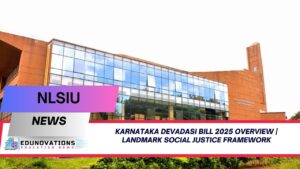Discover how CBSE first language teaching in multilingual classrooms and promotes inclusive education across India.
Introduction
In a transformative step towards inclusive education, the Central Board of Secondary Education (CBSE) has embraced a first language approach to teaching. This pedagogical strategy, recently praised by Anurag Behar—CEO of Azim Premji Foundation and a member of the National Steering Committee on the NCF—has sparked discussions across the education sector in India. Behar, known for his commitment to equitable learning, highlighted the benefits of CBSE first language teaching in multilingual classrooms, calling it a “spot-on” reform.
India’s education system serves a population speaking over 19,500 languages and dialects. In this context, teaching in a child’s first language isn’t just a convenience—it’s a necessity for equitable and effective learning.
What Is the First Language Approach?
The first language approach involves instructing students in the language they first learned at home. This method has gained ground globally due to its ability to:
- Improve comprehension
- Support early literacy
- Encourage student engagement
- Strengthen cognitive development
In multilingual nations like India, the strategy aligns closely with the NEP 2020 vision, which prioritizes mother tongue or regional language instruction until at least Grade 5.
Why the CBSE Shift Matters
Until recently, many CBSE schools defaulted to English or Hindi for instruction—even in regions where those weren’t the local languages. This disconnect often led to poor learning outcomes and alienation from school systems. By shifting towards the CBSE first language teaching method, the board acknowledges that language is not just a medium of instruction but also a carrier of culture, identity, and understanding.
Literacy Gains Through the First Language Lens
A UNESCO study (2022) confirms that children taught in their first language are 30–50% more likely to develop strong literacy skills by Grade 3. The impact of first language instruction on CBSE student literacy could be profound, especially in underserved and tribal areas.
- Example: In Jharkhand, tribal students taught in their mother tongue showed a 45% increase in reading proficiency over two years compared to their peers taught in Hindi.
Such findings validate Anurag Behar’s support for the first language approach.
Bridging the Multilingual Divide
India’s classrooms are inherently diverse. A single district may have students who speak multiple mother tongues. CBSE’s approach now recommends:
- Multilingual primers
- Language mapping in classrooms
- Training teachers in bilingual instruction
These are essential steps in multilingual education, where a CBSE first language teaching method multilingual education guide can become a cornerstone for academic planning.
Opposition and Counterarguments
Some critics argue that English-medium instruction gives students a competitive edge. However, Behar asserts that early literacy in the first language does not hinder future acquisition of other languages, including English. On the contrary, cognitive scaffolding in the first language accelerates second-language learning.
A Glimpse into Ground-Level Implementation
Anurag Behar cited initiatives where schools integrated the first language approach successfully:
- Karnataka: Government schools using Kannada in early grades reported a 60% boost in overall test scores.
- Odisha: Santhali-medium teaching helped tribal children reduce dropout rates by 28%.
These case studies bolster the benefits of CBSE first language teaching in multilingual classrooms beyond theoretical support.
Toppers Use Mind Maps to score more than 95%
NCERT Class 11th Commerce Mind Maps
Add to cartOriginal price was: ₹999.00.₹199.00Current price is: ₹199.00.NCERT Class 12th Chemistry Mind Maps
Add to cartOriginal price was: ₹199.00.₹75.00Current price is: ₹75.00.NCERT Class 12th Commerce Mind Maps
Add to cartOriginal price was: ₹999.00.₹199.00Current price is: ₹199.00.NCERT Class 12th Science Mind Maps
Add to cartOriginal price was: ₹999.00.₹199.00Current price is: ₹199.00.NCERT Mind Maps For Class 10th
Add to cartOriginal price was: ₹999.00.₹199.00Current price is: ₹199.00.
Purchase Today
Expert Insight
Dr. Krishna Kumar, former NCERT Director, stated in a recent panel, “Teaching children in a language they understand is not an option—it is the ethical responsibility of any education system.”
Policy Support and Framework
The National Curriculum Framework (NCF) 2023, part of the NEP 2020 implementation, mandates foundational literacy in the child’s first language. CBSE’s adaptation to this recommendation marks a systemic shift toward inclusive pedagogy.
The Role of Teachers
Teachers play a central role in implementing this vision:
- They must be trained in multilingual pedagogy.
- Support materials in multiple languages must be provided.
- Local language-speaking instructors need to be prioritized in hiring.
Action Steps for Schools and Educators
To implement this approach effectively, schools should:
- Conduct language mapping of student populations.
- Use NCERT Courses in regional languages from EduNovations.
- Refer to syllabus outlines in local languages via EduNovations syllabus.
- Encourage use of NCERT mind maps for better memory retention.
- Provide access to free NCERT PDF downloads in multiple languages.
Technological Support and External Help
For schools seeking to upgrade their digital infrastructure to support multilingual education, platforms like Mart India Infotech offer tailored web solutions.
Additional Resources
- For daily current affairs related to education reforms, visit EduNovations Current Affairs.
- Access CBSE-aligned notes in multiple languages: Notes
- Practice with multilingual MCQs: MCQ Bank
- Watch educational videos in regional languages: EduNovations Videos
Final Thoughts
The benefits of CBSE first language teaching in multilingual classrooms are manifold—ranging from enhanced literacy to emotional security for learners. As Anurag Behar rightly noted, this reform is not just logical but compassionate. In a country as diverse as India, teaching children in a language they understand best is the first step toward equitable and quality education.
✅ Frequently Asked Questions (FAQs)
- What are the benefits of CBSE first language teaching in multilingual classrooms?
It improves literacy, comprehension, and emotional connection to learning. - Why is CBSE adopting a first language strategy in schools?
To align with NEP 2020 and improve learning outcomes among diverse linguistic groups. - How does CBSE’s first language policy impact student literacy?
It fosters early reading and cognitive development, especially in rural areas. - What is the CBSE first language teaching method multilingual education guide?
A guideline that helps educators implement language-based instruction in diverse settings. - Can students still learn English under the first language approach?
Yes, English is introduced gradually after literacy is built in the first language. - Are there any statistics showing the success of the first language method?
Yes, studies show up to a 45% improvement in literacy among first-language learners. - Where can schools find NCERT content in regional languages?
On platforms like EduNovations NCERT Courses. - What role do teachers play in this transition?
Teachers must be trained in bilingual or multilingual instruction techniques. - Is there any expert support for this teaching method?
Education leaders like Anurag Behar and Dr. Krishna Kumar strongly endorse it. - How can schools get technical help for this transition?
By contacting web solution providers like Mart India Infotech.














